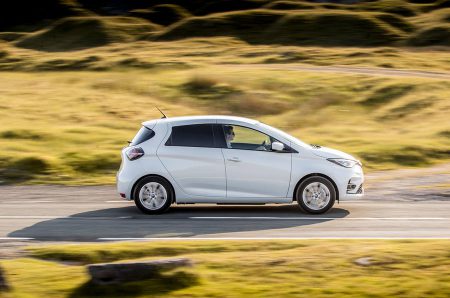Automakers have already begun to abolish ICE.
This year has made clear that the internal combustion engine’s (ICE) days are numbered. 2020 saw explosive growth in the automotive industry’s EV segment, with nearly every major manufacturer and brand group announcing, unveiling or debuting new and upcoming electric vehicles. Tesla managed to retain its position at the head of the market this year but its lead over rivals is shrinking as automotive stalwarts like GM, Fiat Chrysler, Hyundai Motor Group and the Volkswagen Group all jump into the EV fray. 2020 saw more than just new EV models, though: The battery technologies that power them and the transportation infrastructure that leverages them enjoyed some impressive advancements of their own.
Though it did not meet as many historic milestones as SpaceX did in 2020, Tesla still managed to get itself onto the S&P 500 market index, set quarterly vehicle delivery records (and is on pace to meet its year end goal of 500,000 deliveries), as well as make founder Elon Musk an obscene amount of money.
Among the company’s notable accomplishments, Tesla extended the range of this year’s Model Y to more than 400 miles per charge — that’s a 20-percent improvement over the 2019 model — as well as increasing its acceleration and lowering its price. Tesla also began delivering its new Model Y in March (including the company’s millionth vehicle) and rolled out a three-row, seven-seat option in early December. Unfortunately, the company’s long awaited electric Semi won’t see the light of day in 2020; Musk announced in April that its release has been delayed until 2021. However, Semi production is already beginning to ramp up in advance of that goal.

“It’s time to go all out and bring the Tesla Semi to volume production. It’s been in limited production so far, which has allowed us to improve many aspects of the design,” Musk wrote in a leaked email seen by CNBC.
Tesla made additional headlines in September during its Battery Day event when the company announced plans to develop a new generation of less expensive, more capable batteries within the next two years or so, which could lead to Teslas costing as little as $25,000. Even more exciting, Musk took the opportunity to unveil a new 1,100 HP “plaid” Model S as well. It goes on sale in 2021.
2020 has also seen a number of pricing shenanigans for some of Tesla’s more popular features. For example, In May, Musk announced via Twitter that the company’s forthcoming “full self-driving” package would become available in July for a whopping $7,000 — a grand more than the company had initially quoted. And, true to Musk’s word, that price increased again in October to a cool $10,000 once the feature entered beta. Musk claims that once completed the FSD package could be worth as much as $100,000 — despite its capabilities being panned by Consumer Reports and earning mediocre scores from Europe’s New Car Assessment Program (NCAP). Tesla also kneecapped its used car warranty and eliminated its long-standing seven-day return policy for new vehicles without any real explanations as to why. That’s due in part to the fact that Tesla also axed its entire PR department this year, opting instead to just have Musk tweet through it.
Tesla also helped found the Zero Emission Transportation Association, or ZETA, a 26-member lobbying group tasked with promoting and advocating the further adoption of EV technologies and services to lawmakers. We’ve already seen some significant movement towards EV tech at the state level with California moving to ban the sale of new ICE vehicles by 2035.
“This is the most impactful step our state can take to fight climate change,” California Governor Gavin Newsom said at a news conference in September. “For too many decades, we have allowed cars to pollute the air that our children and families breathe. You deserve to have a car that doesn’t give your kids asthma. Our cars shouldn’t make wildfires worse and create more days filled with smoky air. Cars shouldn’t melt glaciers or raise sea levels threatening our cherished beaches and coastlines.”
Read more: engadget
It’s Time to Go Green!
If you would like to know more about Solar Panels and the PowerBanx range of home battery systems, and get a free instant quote, please complete our online form:

